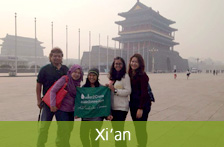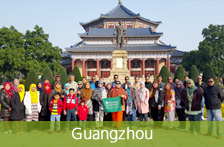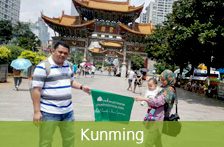The most common complaint about learning Mandarin is that it’s a tonal language. Well, if Mandarin’s four tones sound daunting, try Cantonese! With six tones, it is no wonder that Cantonese speakers sound like they are constantly singing a tune. Cantonese is the lingua franca of Guangdong province of China as well as Hong Kong, and there are many speakers of Cantonese in Southeast Asia and in the Chinese diaspora communities of America and Europe. If you take a walk around Chinatown in many major cities, you’d be just as likely to hear
Check this video out to hear the differences between Mandarin and Cantonese.
A little background
Cantonese is one of the major dialects of the Chinese language, and there is much debate over whether the term ‘language’ is more suitable to describe it due to its distinctiveness. Its history dates back a lot longer than Mandarin, and Middle Chinese texts are said to sound closer to modern Cantonese than contemporary Mandarin. Both are mutually unintelligible, though they use the same Chinese script with some differentiation in additional characters in Cantonese. Also, the traditional Chinese script is used in Hong Kong, while the simplified script is used in China. You’ll probably notice if you travel around that words look a lot more complicated, but also beautiful, in Hong Kong.
Another added complexity in Cantonese is that there are two forms - written and spoken. In other words, how one speaks is not the same as how one writes, and there are sentences that only make sense in one form, written or spoken, but not in the other.
Cantonese Tones
Learning to speak Cantonese can be an uphill battle, especially if you’re tone-deaf. However, it is possible, and there are plenty of online resources to help you out if you’re serious about being able to pronounce some basic greetings, numbers, and to impress people with your linguistic abilities.
Check these videos out if you’re quite the language geek.
Cantonese Films and Music
As a powerhouse of Asian film and music, Hong Kong has played a significant part in boosting Cantonese’s place in the world of film and music in the region. Watched ‘In the Mood for Love’ by Wong Kar Wai? That’s Cantonese spoken in the film. Love Stephen Chow’s movies? Those are in Cantonese too. And wait, so are Jackie Chan’s films which span the globe.
Here’s a scene from ‘In The Mood for Love’, where the Cantonese spoken is what you’d typically hear in Hong Kong.
When it comes to Cantonese-pop, many pop-rock singers in Hong Kong would release both Cantonese and Mandarin versions of their top songs, with rather different lyrics and meanings altogether. Some of the biggest pop stars in the Chinese music world have begun as Canto-pop singers, including Faye Wong, Jacky Cheung, and Eason Chan.
Here’s Eason Chan’s visually gorgeous music video, ‘Four Seasons’, as an introduction to contemporary Canto-pop.
Cantonese Cuisine
Cantonese isn’t just a dialect or language, but also refers to the culture of the region of Canton, and of course, you can’t mention culture without mentioning cuisine.
Cantonese cuisine is perhaps the default “Chinese cuisine” that people know of, without being aware that it’s actually from ‘Canton.' Thanks to a large number of native Hong Kong and Guandong immigrants worldwide, chances are you’ll be able to taste some version of Cantonese cuisine in the Chinatown near you.
Unlike the cuisines of North China, the Cantonese diet is light in its usage of oil and balanced in its usage of spices. When it comes to meat, you’ll notice that lamb or goats are rarely used. The stir-fry is the most common cooking technique, which preserves the crunchy texture of vegetables. Steaming, shallow and deep-frying, as well as braising are also techniques often employed in the Cantonese kitchen.
One of the hallmarks of Cantonese cuisine that is known worldwide is the Dim Sum, where Hong Kong is the proud Mecca and custodian of the culinary art. Known as Chinese Tapas, Dim Sum is an extensive selection of small plates of bite-sized creations that are meant to be enjoyed with family and friends on a late morning. Other popular Cantonese dishes that can be had without a full clan on the table are dishes like Wonton Noodles, Char Siu Rice (roast pork rice), or Claypot Rice.















.jpg)










